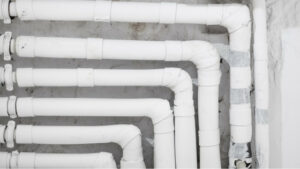Pros and Cons for Alternative Waste Line Piping
There was once a time when ceramic, metal and concrete were the only materials used for plumbing.
Today, most pipe metals like galvanized steel and copper. But while metal plumbing is long-lasting, it requires strenuous installation work. Moreover, metal pipes must be welded or threaded, and tubing will require the installation of fittings.
Tureks Plumbing shares some pros and cons for alternative waste line piping materials used by professional plumbing contractors today.
1. Plastic
The use of plastic plumbing pipes was introduced in the 1930s. It gives professional plumbers an option that is easier to install and that prevents the common plumbing problems with metal pipes.
Pros
Corrosion-resistant – Plastic pipes are not easily corroded by common household chemicals or water. It can be adjusted to meet residential plumbing needs, including drainage and water supply.
Easier installation – Since plastic pipes are light, plumbing jobs using these pipes are easier to install and even cost less than those involving metal pipes.
Low heat conductivity – Plastic does not conduct heat, so it can maintain the temperature of the water it carries.
Cons
Sensitivity to sunlight – Plastic pipes will become brittle if they are exposed to the UV rays of the sun.
Low melting point – Since plastic burns or melts at lower temperatures, it presents an added danger in case of a house fire.
2. Pipe
Galvanized pipe is a steel or iron pipe that has been plated using a corrosion-resistant zinc surface. Pipes are connected using threaded fittings. Also, they are sealed with pipe dope or thread tape.
Pros
Rust-resistant and durable
It can last for up to 50 years
Cons
Heavy – Since these pipes are made of steel or iron, these are heavy to handle.
Highly susceptible to blockages – As pipes begin to deteriorate, they become prone to blockages.
3. Cast Iron
Gone are the days when cast iron piping was connected using melted lead. Today, the material is connected with plastic or rubber fittings.
Pros
Long-lasting – In some applications, the use of cast iron piping can exceed 50 years.
Quiet – These pipes can reduce, if not eliminate, the usual sounds of running water as it passes through.
Cons
Heavy – Since it is made of iron, it is too heavy, so transporting and working with it can be difficult.
Hard – These pipes are challenging to cut. It usually requires special tools like a metal cutting saw or snap-wrench.
Repairing or installing your plumbing system will depend on the specifications and design of your original plumbing. But it is always best to consult a trustworthy plumbing contractor like Tureks Plumbing before commencing with any plumbing project or to hire them to get the whole job done.


